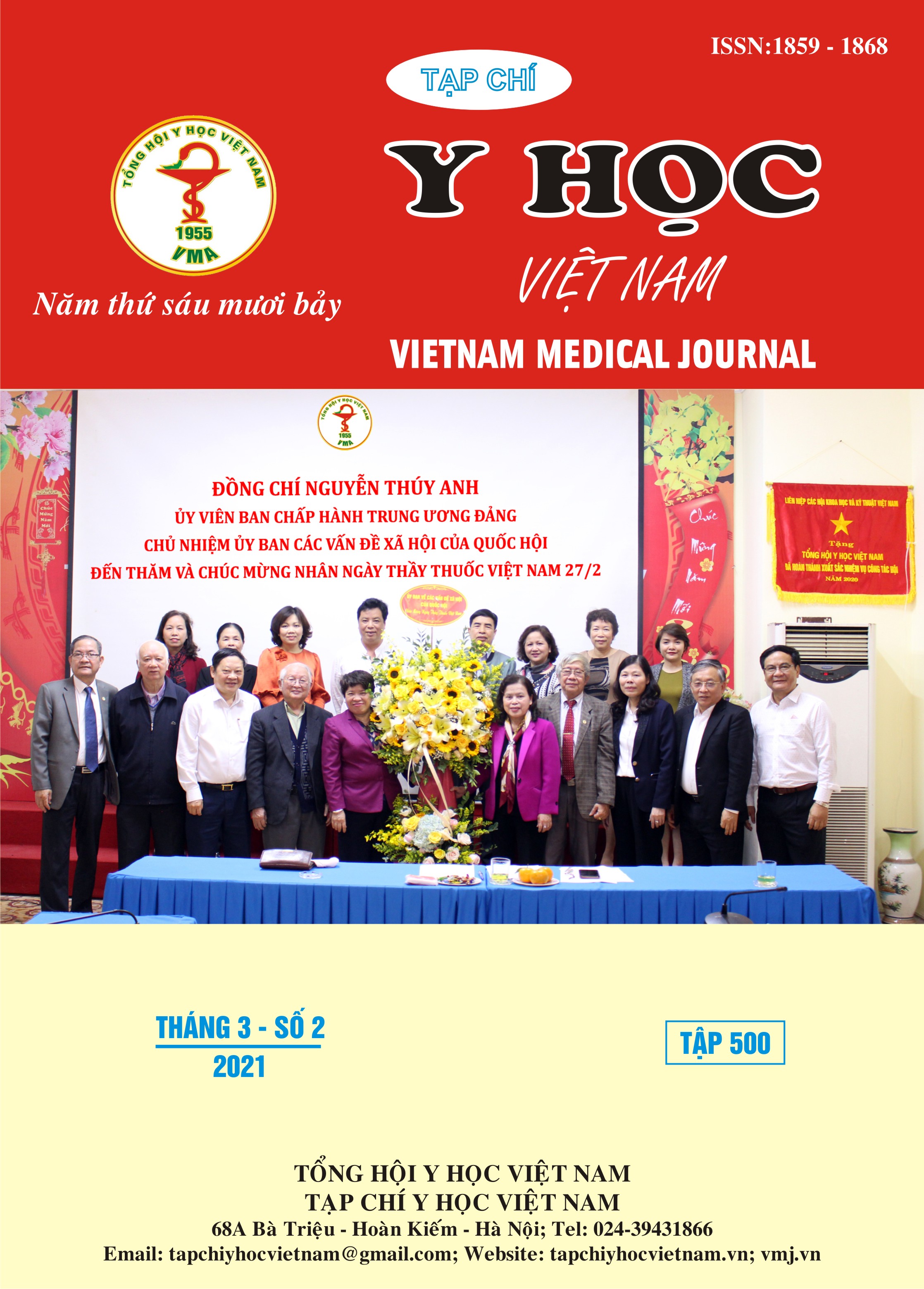ASSESSMENT OF CORNEAL REFRACTION POWER AND AXIS LENGTH IN HIGH MYOPIA
Main Article Content
Abstract
Objective: Assessing the initial effectiveness of myopia control by Atropin 0.01% on rapidly increasing myopia children and find out some factors related to the effectiveness of myopia control with Atropin 0.01%. Research methods: clinical trial studies without control group, the study was conducted on 54 eyes with a myopia progress rate of over 1,00 D/year in the refraction department of Vietnam National Eye Hospital. Results: All cases after using Atropin 0.01% were no glare, redness, and difficulty in near vision. Myopia progress rate: after 6 months of using Atropin 0.01%, the average rate of increase in myopia power was 0.62 ± 0.69 D/year, after 12 months of using the drug, the average rate of increase in myopia power was 0.47 ± 0.43 D/ year. Axis length: after 6 months it was longer 0.18 ± 0.11mm (p<0.001), compared to 6 months, after 12 months it was longer 0.15 ± 0.82mm (p>0.05). The accommondation amplitude decreased after 2 weeks of using Atropin 0.01%, recovered after 6 months and 12 months of dropping the drug. The pupil size dilated slightly after 2 weeks of using Atropin 0.01%, recovered after 6 months and 12 months of dropping the drug. Conclusion: After using Atropin 0.01% in myopia children, the rate of myopia progress decreased and near vision was not affectted.
Article Details
Keywords
myopia control, Atropin 0.01%
References
2. Chia A, Chua WH, Wen L, Fong A, Goon YY, Tan D. Atropine for the treatment of childhood myopia: changes after stopping Atropine 0.01%, 0.1% and 0.5%. American journal of ophthalmology. 2014 Feb;157(2):451-7 e1. PubMed PMID: 24315293.
3. Chua WH, Balakrishnan V, Chan YH, Tong L, Ling Y, Quah BL, et al. Atropine for the treatment of childhood myopia. Ophthalmology. 2006 Dec;113(12):2285-91. PubMed PMID: 16996612.
4. Hoàng Quang Bình. Thực trạng tật khúc xạ của học sinh một số trường tiểu học và trung học cơ sở Cần Thơ năm học 2013-2014. Tạp chí Y học Việt Nam. 2016;442(1):187-90
5. Polling JR, Kok RG, Tideman JW, Meskat B, Klaver CC. Effectiveness study of Atropine for progressive myopia in Europeans. Eye. 2016 Jul;30(7):998-1004. PubMed PMID: 27101751. Pubmed Central PMCID: 4941076.
6. Shih YF, Chen CH, Chou AC, Ho TC, Lin LL, Hung PT. Effects of different concentrations of Atropine on controlling myopia in myopic children. Journal of ocular pharmacology and therapeutics: the official journal of the Association for Ocular Pharmacology and Therapeutics. 1999 Feb;15(1):85-90. PubMed PMID: 10048351
7. Tran HDM, Tran YH, Tran TD, Jong M, Coroneo M, Sankaridurg P. A Review of Myopia Control with Atropine. Journal of ocular pharmacology and therapeutics: the official journal of the Association for Ocular Pharmacology and Therapeutics. 2018 Jun;34(5):374-9. PubMed PMID: 29715053.
8. Yam JC, Jiang Y, Tang SM, Law AKP, Chan JJ, Wong E, et al. Low-Concentration Atropine for Myopia Progression (LAMP) Study: A Randomized, Double-Blinded, Placebo-Controlled Trial of 0.05%, 0.025%, and 0.01% Atropine Eye Drops in Myopia Control. Ophthalmology. 2019 Jan;126(1):113-24. PubMed PMID: 30514630.


